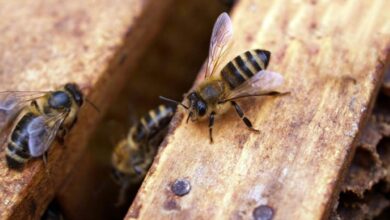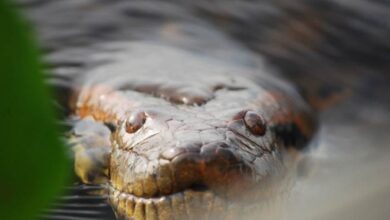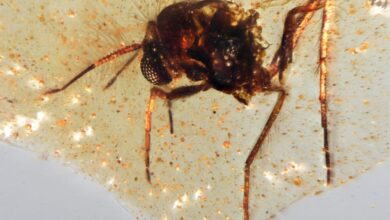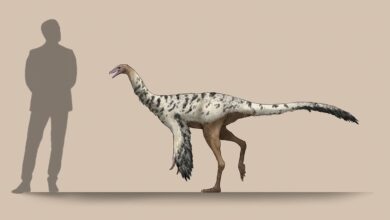Colombian Fossil Reveals Ancient Terror Bird’s Showdown That’s Rewriting Prehistoric Power Rankings
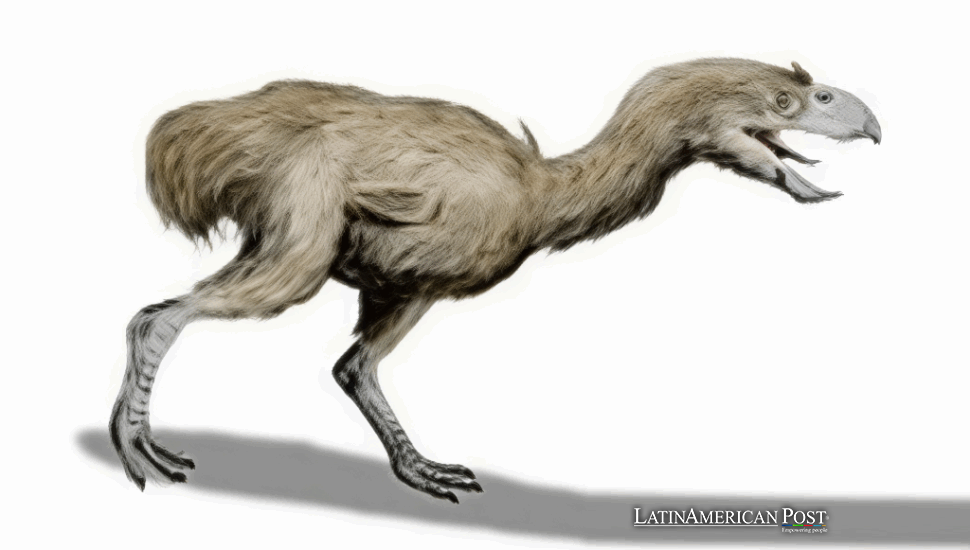
In Colombia’s Tatacoa Desert, a dusty bone with two puncture marks has revealed a prehistoric ambush: a massive caiman taking down a terror bird. The discovery is reshaping scientific views of South America’s ancient food chain—and who ruled it.
From a Chance Find to a Forensic Puzzle
In 2004, amateur fossil hunter César Augusto Perdomo wandered the burnt-orange gullies of Tatacoa, a desert in southern Colombia where the ground sometimes coughs up ghosts. He spotted a smooth, fist-sized lump poking from a hillside—”nothing special at first glance,” he told the BBC.
He pocketed the bone and placed it on a shelf in his small museum in Huila. There it sat—unremarked, unstudied—for nearly a decade.
Then one day, paleontologist Andrés Link, visiting from Universidad de los Andes, noticed something odd. The fragment—a distal tarsometatarsus, part of a leg—had two clean punctures. It didn’t just belong to a terror bird, one of South America’s long-extinct apex predators. It had been attacked.
“Terror bird fossils are rare,” Link said. “But one with bite marks? That’s almost unheard of.”
Curiosity turned into a years-long investigation, combining CT scans, 3D modeling, and comparative studies of crocodilian skulls from Colombia to Europe. And slowly, the story behind the fossil came into view—a story of predators colliding, and one not walking away.
Terror Bird vs. Giant Caiman: A Battle of Beasts
For decades, phorusrhacids—better known as terror birds—stood atop paleontological imagination: fast, brutal, two-and-a-half-meter killers with hooked beaks and bone-crushing legs. But the Tatacoa bone tells a different tale.
Link and his team used finite-element analysis to reconstruct the force and angle of the bites. The punctures matched the bite profile of Purussaurus neivensis, a now-extinct giant caiman that once reached over five meters long. Its skull was built for ambush, not chase.
“This wasn’t a skirmish,” Link explained. “This was a surprise attack. The caiman clamped from the side and shattered the bird’s ankle.”
No signs of healing were found, indicating that the terror bird either died immediately or soon after. Published in Biology Letters, the study marks the first direct fossil evidence of a deadly interaction between these prehistoric giants.
“It’s like finding a T. rex tooth embedded in another T. rex,” said María Pardo, a co-author. “It reminds us that even top predators can fall.”
Until now, terror birds were assumed to dominate unchallenged. However, this bone suggests they weren’t just hunters—they were sometimes hunted themselves.
Resurrecting a Lost World from Desert Dust
The Tatacoa Desert wasn’t always dry.
Thirteen million years ago, during the Miocene epoch, the region was a patchwork of wetlands and rainforest, nourished by runoff from the rising Andes. In that world, flamingos waded through reed beds, primates leapt between trees, and predators like Purussaurus waited in the shallows.
To bring that vanished world to life, Link’s team partnered with Colombian CGI artists, layering ancient vegetation, sound, and light over modern LiDAR scans of the Tatacoa Desert. Their resulting animation—shown at BBC studios in London—shows the moment before the ambush: the terror bird striding confidently through cattails, unaware of the shadow below.
“It’s not just about science,” said Natalia Herrera, the producer behind the visualization. “It’s about making people feel the place, the silence before the strike.”
Ironically, Tatacoa’s current aridness means modern reptiles can’t match the scale of Purussaurus. The region’s wetlands are long gone, replaced by cactus and sun-scorched stone. But in the fossil, the lushness lingers.
The bone, once buried in mud, now rests under glass—an echo from a time when the desert was a killing ground for titans.
Why One Fossil Might Change Everything
The implications of the find go far beyond one broken leg.
For years, paleontologists believed terror birds ruled South America after dinosaurs vanished. Their isolation on the continent gave them a distinct advantage. But this fossil adds a new chapter to that story—one where giant caimans competed for the same space, same prey, and same dominance.
“Ecologically, it makes sense,” said Alex Hastings, an evolutionary biologist who reviewed the study. “If terror birds were losing battles, that might explain why they never expanded into Central or North America even when land bridges formed.”
The discovery also reinforces the importance of local collectors like Perdomo. Before Colombia established its National Fossil Policy in 2015, many specimens were lost to private collectors or poorly catalogued. Today, there’s a growing effort to partner regional museums with academic institutions—ensuring fossils don’t sit unstudied for another twenty years.
“Every fragment holds a clue,” Link said. “And in this case, it told us predators can bleed.”
The story is catching fire well beyond academic circles. In classrooms across Huila, kids now learn about Purussaurus and the terror birds that once roamed their backyard. And in the desert, under blistering skies, tourists follow interpretive trails that trace the steps of creatures locked in a battle that has lasted millions of years.
One fossil. Two punctures. A rewrite of ancient power.
In Colombia’s Tatacoa, where bones outlast rivers, a single broken leg has shattered the myth of the invincible terror bird. It’s a reminder that nature always balances its scales, even in the most unexpected ways.
Also Read: The Argentine Lizard That Could Upend the Southeastern United States
Credits: Based on reporting and interviews by BBC with César Augusto Perdomo, Dr. Andrés Link, Dr. María Pardo, and Natalia Herrera; peer-reviewed findings published in Biology Letters; contextual support from Colombia’s Universidad de los Andes and the National Fossil Policy archives.

